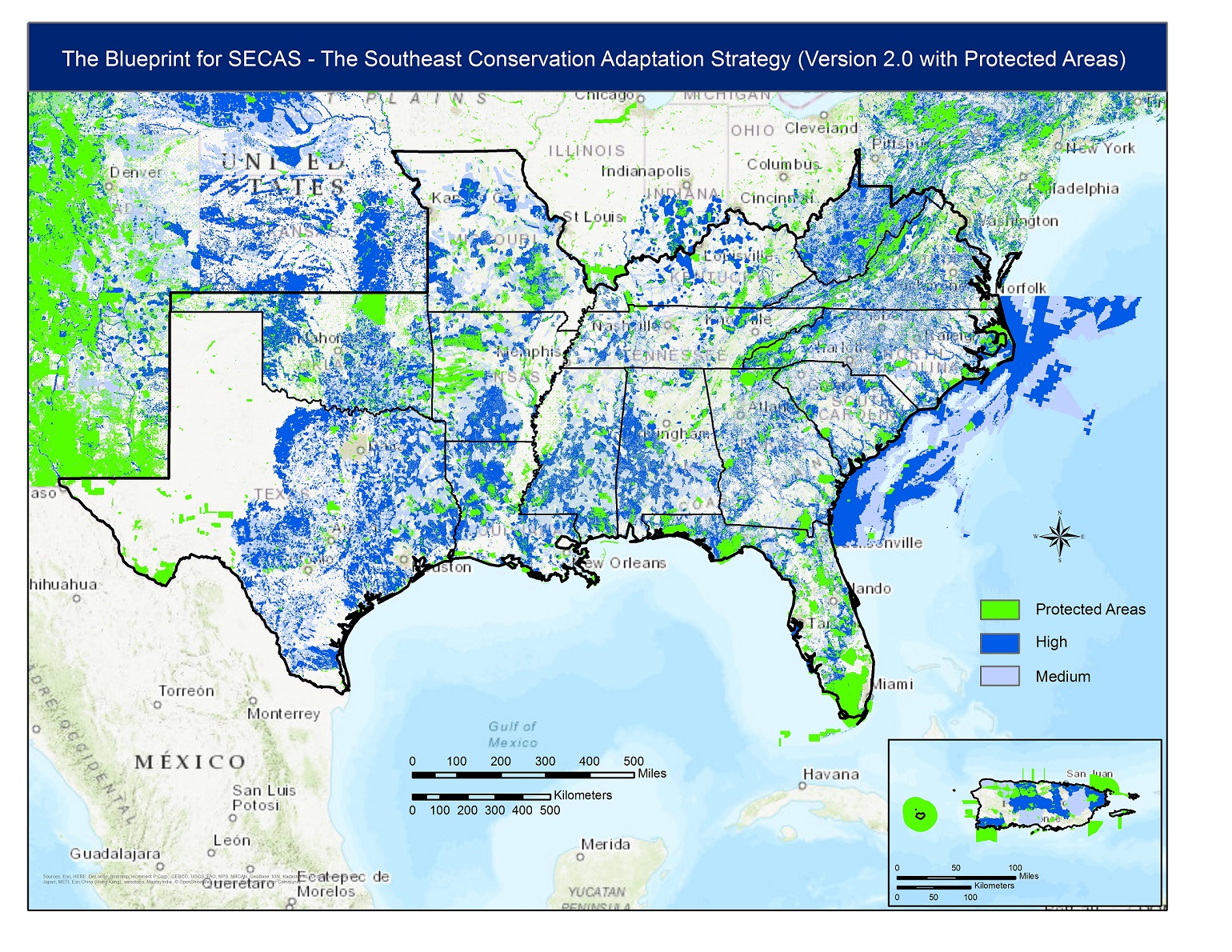From the archive - Aligning conservation capacity and need in the Southeast

Many of you are aware that Science Applications is the organizing home of LCCs within the Fish and Wildlife Service (FWS). In the southeast region, Science Applications includes the South Atlantic, Peninsular Florida, Gulf Coastal Plains and Ozarks, and Caribbean LCCs. Given continuing uncertainty about the status of LCCs in the federal budget, Science Applications in the southeast is examining the focus of resources and capacity in support of large-scale conservation throughout the region. Supporting the Southeast Conservation Adaptation Strategy (SECAS) has been a focal area of the southeast LCCs since 2011, and continuing to support and participate in SECAS remains a regional FWS priority.
As a state-led initiative, SECAS provides a unifying framework for aligning conservation actions with the priorities of member states of the Southeastern Association of Fish and Wildlife Agencies (SEAFWA) and with the conservation priorities of the FWS and other federal interests through the member agencies of the Southeast Natural Resource Leaders Group (SENRLG). These groups are committed to a unifying conservation vision for the southeast, and the Southeast Blueprint is an evolving spatial representation of that vision.
Using a SECAS framework, the southeast Science Applications staff has drafted an action plan to focus on the following categories of priority work:
- At Risk Species Conservation
- State Wildlife Action Plan integration across jurisdictions
- Gulf of Mexico restoration and coastal resilience
- Collaborative Landscape Conservation – design and implementation
- Legacy Projects and continuing SECAS support
- FWS Science development and delivery
The action plan defines the background, issues, and specific actions around the priority work areas above using the following approaches:
- Science Applications conducts meaningful engagement in understanding and addressing priority programmatic needs of FWS and states;
- Science Applications demonstrates value and alignment with priorities in the work and actions undertaken; and
- Science Applications implements incremental refinement and improvement of the Southeast Blueprint
The SECAS initiative is an excellent example of large-scale collaborative conservation involving multiple partners. Following the SECAS framework, the southeast Science Applications action plan is a living document that will be revised and refined based on feedback from FWS and states, and will evolve in response to programmatic information and other changes during this dynamic era.
On a related SECAS topic, if you’re attending the North American Wildlife and Natural Resources Conference in Norfolk, VA, there will be a special SECAS Session on Tuesday, March 28 focusing on SECAS as a model for collaborative conservation. Please consider attending this exciting session to learn more about SECAS.